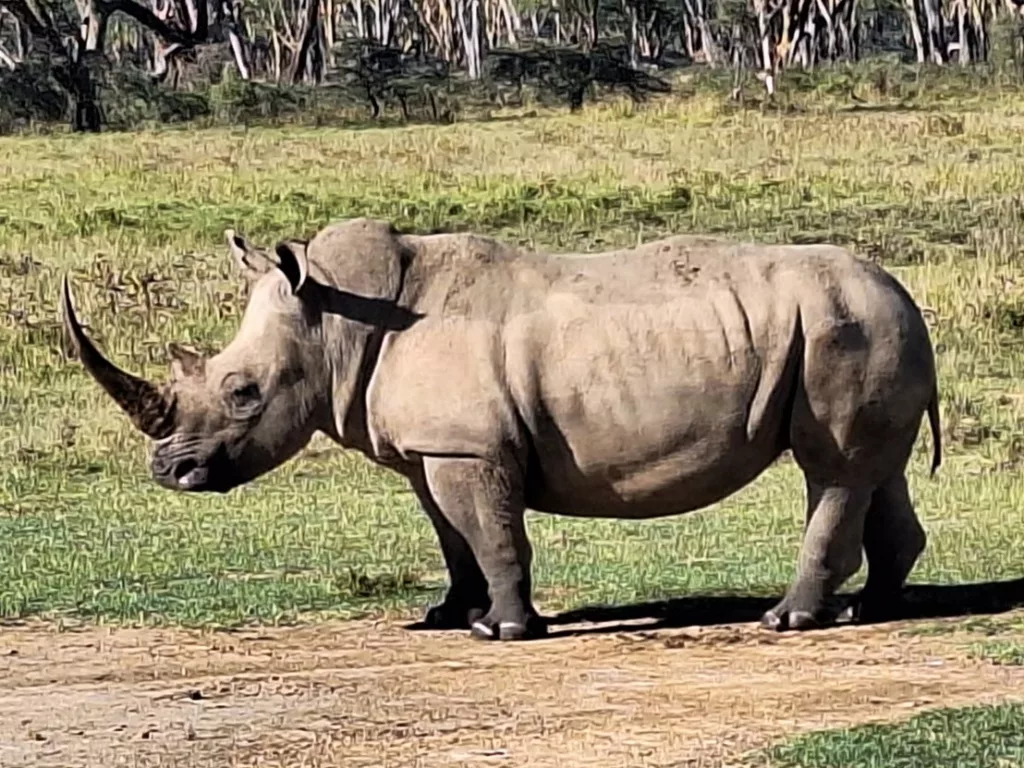Professor Julien Gorbach offers a preview of what a foreign correspondence course (JOUR 459) will prepare you to do.
Aloha! This is a dispatch from a research camp in South Africa’s Kruger National Park, “deep in the bush,” as people here would say. Just beyond the electric fence that encircles our bungalows, I am surrounded by lions, elephants, leopards, buffalos and rhinos—the so-called “Big Five” or “charismatic megafauna” that are the great attraction of the African wilderness. Every day, as soon as I drive out of our gate, I encounter herds of zebras, prowling hyenas, grazing impalas, circus troupes of monkeys, and other inhabitants of this vast kingdom, who saunter into the road right in front of me.
I am here to learn about the lengths to which people here must go to protect these animals, and specifically, about the recent assassinations of two men who were gunned down while defending the most vulnerable of the park’s residents: the black and white rhinos. In March 2020, a hit squad ambushed a police commander of the investigative task force, Lt.-Col. Leroy Bruwer, on his way to work. The hit was in retaliation for the case he had built against a poaching kingpin. Then, last year, Head Ranger Anton Mzimba of the nearby Timbavati Nature Reserve was fatally shot outside his house in what appears to have been blowback for rooting out the infiltration of the poaching syndicates within his small team.
The killings of Bruwer and Mzimba punctuated what has been characterized in the press as a nearly 15-year “war” here over poaching. South Africa is one of the many fronts around the world in a long history of violent struggle to protect animals and wilderness areas. South Africa is home to 83 percent of the world’s rhino population, which makes this the crucial ground on which to stop the poachers—who are after their valuable horns—from driving these animals into extinction. In the United States, we might think of park rangers as the friends of Smokey the Bear who prevent forest fires, but globally, rangers have been portrayed in the media as the “soldiers” in these conflicts, however inaccurate or unfair that label may actually be.
More than a thousand have been killed in the line of duty over the past ten years, mostly by poachers, according to the International Ranger Federation, with many more injured. Wildlife scholars have tracked the escalating bloodshed and the increasingly sophisticated, lethal tactics and equipment of the rangers with alarm, decrying this as “green militarization”—a toxic, counterproductive approach to conservation that violates the basic spirit and principles of the cause. But Head Ranger Cathy Dreyer objects to the press’s use of the word “war,” and said the park was just responding to a worsening crisis.
“It was very much too sensationalized, and so much of it came with a negative connotation towards rangers,” she said. “Because now we became these soldiers, which we’re not. Law enforcement was always a part of our job. Unfortunately, it escalated and it became all of our job. But we’re certainly not the soldiers taking part in a war. It was a crisis and we had to react.”
The full story, published in the Manoa Mirror, the students’ news portal of the Journalism Program.
